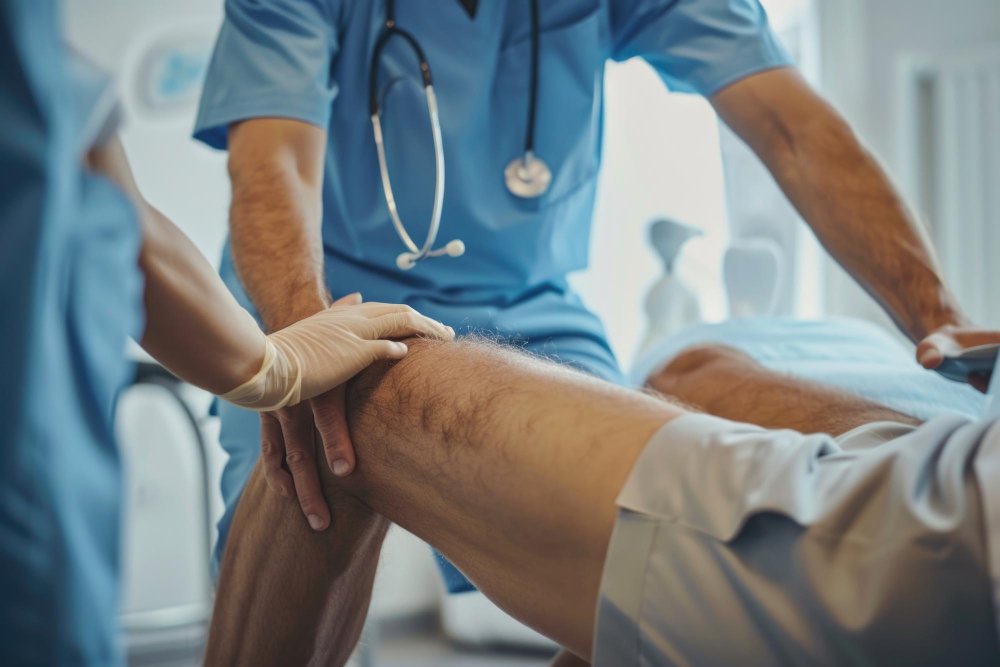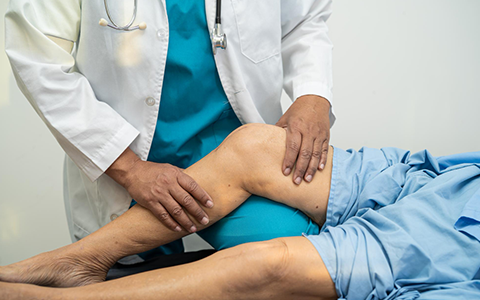Meniscus Injury Orthopedic Jersey City: Causes, Treatment, and Recovery
Meniscus is one of the most important menisci, which support and facilitate the movement of the knee. It is a cartilage wedge shock absorber between the femur (thigh bone) and the shin bone (tibia) and transmits motion and stress to the joint. But whenever the meniscus gets injured, lifestyle and mobility are impacted negatively.
Each knee contains two menisci, the lateral one and the medial one. They allow the body weight to be transferred and stabilize the knee during movement. Meniscal tears most commonly occur whenever the knee is out of its normal plane or at a greater angle than the knee can tolerate, such as often with sports, especially contact, pivoting, and cutting-type sports.
A tear of a meniscus will cause clicking, pain, swelling, stiffness, or pain. Catching of the knee, locking, or buckling can be reported by patients.

Diagnosing a Meniscus Injury: Orthopedic Jersey City
Most meniscus injuries are diagnosed based on history, clinical examination, and imaging. The physicians will then perform a standard McMurray test or specific tests to put stress on the joint. MRI has been deemed to be the gold standard for diagnosing a tear and the size of the tear and the most appropriate form of treatment.
Meniscus Injury Orthopedic Jersey City: Conservative and Surgical Treatment
Treatment is based on location, tear size and type, patient activity level, and patient age. Most tears, especially peripheral tears with superior blood supply, are conservatively managed with rest, ice, compression, elevation (RICE), and physical therapy.
In the majority of instances, however, especially if the knee remains unstable or painful, surgery is scheduled.

Repairing Joint Cartilage with Stem Cells
Partial Meniscectomy
This is the removal of the compromised part of the meniscus. It’s most commonly advised if the tear is in an area of limited blood supply so that it won’t heal by itself. The procedure is done quite modestly, using arthroscopic equipment through small portals.
Recovery from partial meniscectomy will be anywhere from several weeks to a few months. In some cases, patients may be able to walk a few hours postoperatively and begin physical therapy to enhance flexibility and strength. Taking out a part of the meniscus does introduce some risk, however, of contributing to the likelihood of osteoarthritis in the future.
Meniscus Repair Surgery
Whereas a meniscectomy will destroy the tissue, a meniscus repair won’t and will attempt to place the tissue back into its proper position. It’s sewing the two halves of the torn tissue back together, and it would be healthier in the long term for the joint. Not every tear, however, will be dependent a great deal upon where the injury is.
Recovery is more prolonged and formal after a meniscectomy. Patients typically are braced for weeks and use crutches to offload the leg. Range of motion and weight-bearing are restricted initially to preclude stress to the area of repair. Thereafter, even after healing has occurred, physical therapy will allow patients to become fully functional.
Post-Operative Recovery: What to Expect
In the case of meniscus repair, rehabilitation is similarly early, with removal of inflammation and bracing of the joint. This is followed by strengthening, functional training, and finally sports movement.
The majority of patients can be restored to sport and high-level activity at 3 to 6 months based on meniscal healing and compliance with the rehabilitation program. Compliance with the program as intended is paramount in avoiding re-injury and optimal knee strength.
Long-Term Outlook Following a Meniscus Injury
Most men recover well with good care from a meniscus orthopedic Jersey City injury, especially if operated on by an experienced orthopedic surgeon. Surgery is normally the sportsman and health-conscious individual’s preferred option because it offers a better long-term prospect and lower risk of degeneration.
Expert Care You Can Trust: Dr. Paul Rothenberg, MD
Advanced treatment and diagnosis are required for the treatment of meniscus injury. Dr. Paul Rothenberg, MD, is a board-certified orthopedic surgeon with extensive experience in sports injury to the elbow, shoulder, and knee treatment. As the Chief of Sports Medicine and Shoulder Surgery at Grau Orthopaedics, Dr. Rothenberg has brought back scores of competitors and working individuals to optimal performance.
